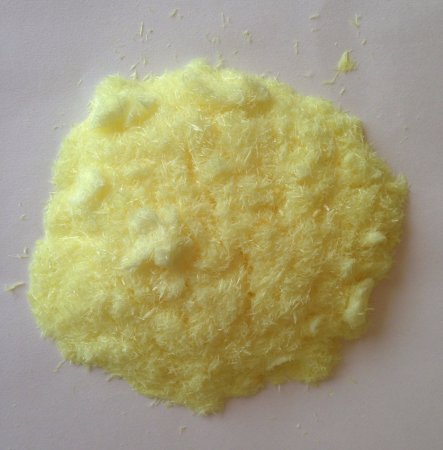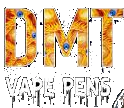Uncategorized
Exploring DMT: Understanding Its Effects, Uses, and Implications in Psychedelic Research
What is DMT? Dimethyltryptamine (DMT) is one of the most powerful and intriguing psychedelics known to science. Found in various plants and even produced naturally in the human brain, DMT has sparked intense curiosity due to its profound effects on consciousness. This psychedelic compound has been used for centuries in traditional shamanic practices and is now at the center of growing scientific research. In this blog, we will explore what DMT is, its effects on the brain, its potential therapeutic uses, and the controversies surrounding its legal status.
What is DMT?
DMT, or Dimethyltryptamine, is a naturally occurring tryptamine compound found in several plants, such as Psychotria viridis and Diplopterys cabrerana, which have been used in the preparation of ayahuasca, a powerful psychedelic brew. DMT is chemically similar to serotonin, a neurotransmitter that regulates mood, and it plays a significant role in human consciousness. It is also produced endogenously in the brain, specifically in the pineal gland, though much of its biological role remains a mystery.
What makes DMT unique compared to other psychedelics is its rapid onset and intense effects. Users often describe the experience as traveling through alternate dimensions or encountering otherworldly entities, leading to its nickname, “The Spirit Molecule.” This psychedelic’s ability to trigger profound shifts in perception and consciousness has made it a subject of fascination for both spiritual seekers and scientific researchers.
The Powerful Effects of DMT
When smoked or vaporized, DMT produces intense, short-lived effects that typically peak within minutes and last anywhere from 15 to 30 minutes. Users often report vivid visual hallucinations, such as intricate geometric patterns, vibrant colors, and the sensation of entering alternate realms. Some individuals also claim to encounter beings or entities that feel more real than the physical world, which has fueled the compound’s association with spiritual or mystical experiences.
Because of its intensity, DMT is considered one of the most powerful psychedelics available. While the experience can be overwhelmingly profound for some, others report feelings of awe and enlightenment. Despite its brief duration, many DMT users claim that the experience has long-lasting impacts on their perception of life, self, and reality.
DMT and Its Potential Therapeutic Uses
Although DMT is illegal in many parts of the world, there is growing interest in its potential therapeutic uses. As part of the broader resurgence of interest in psychedelics for mental health treatment, DMT has been studied for its potential to treat conditions like depression, anxiety, PTSD, and addiction.
Research suggests that, like other psychedelics such as psilocybin and LSD, DMT may induce a transformative experience that could help individuals confront emotional blockages, trauma, and past psychological wounds. Some studies suggest that DMT could play a role in “ego dissolution,” where the boundaries of the self dissolve, potentially leading to breakthroughs in personal growth and mental healing.
Moreover, DMT’s ability to induce intense visionary experiences could be harnessed for creative purposes. Artists, musicians, and writers have reported heightened creativity during DMT trips, making it an area of interest for people looking to explore new ways of enhancing cognitive functions and creativity.
DMT’s Controversial Legal Status
One of the key challenges surrounding DMT is its legal status. In many countries, DMT is classified as a Schedule I controlled substance, making it illegal to possess, distribute, or use. This has hindered scientific research into its full potential and limited its availability for therapeutic use.
However, with the increasing recognition of the mental health benefits of psychedelics, including DMT, there has been a push to reconsider its legal status. Advocates argue that when used responsibly and in a controlled environment, DMT could provide significant therapeutic benefits and be a valuable tool in treating a wide range of mental health conditions.
The Future of DMT Research
As more studies are conducted, the future of DMT research looks promising. Scientists are investigating how this powerful psychedelic interacts with the brain and why it induces such unique and intense experiences. With breakthroughs in psychedelic therapy happening at a rapid pace, DMT may soon play a larger role in mental health treatments, spiritual exploration, and creativity enhancement.

While DMT remains a controversial substance, its potential benefits in the realm of consciousness expansion and mental wellness cannot be ignored. The ongoing research into DMT and psychedelics may one day reshape how we understand the brain, consciousness, and mental health.
Conclusion
DMT, known as the “Spirit Molecule,” continues to captivate both the scientific community and spiritual seekers alike. Its ability to induce vivid hallucinations and profound, transformative experiences makes it one of the most powerful psychedelics. With ongoing research into its therapeutic applications and its potential role in creative enhancement, DMT may soon find a place in mainstream discussions about mental health and personal growth. As more is uncovered about its effects, DMT’s impact on human consciousness may provide new insights into both the mind and the universe.
